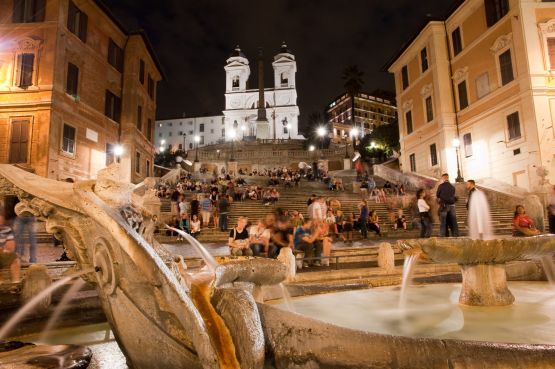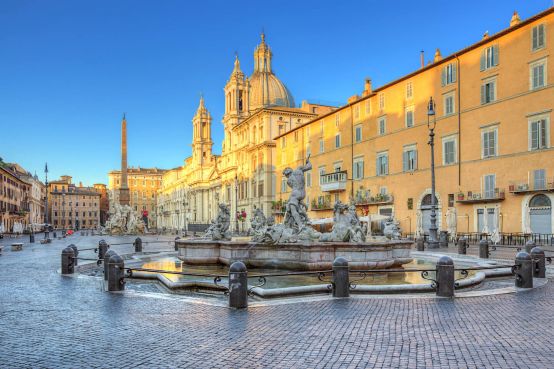North west of Campidoglio, within the vast plains between Via Flamina (presently Via del Corso) and the large arch of the Tiber is the old field of Mars (Campus Martius). This was where during the late medieval age stood the old papal city with two central markets of Piazza Navona and Campo de' Fiori.
Mars' field was originally a watery area subject to frequent flooding of the Tiber that according to legend belonged to the Tarquini. After they were thrown out of power, it passed to state control and was consecrated to Mars, god of war. Situated outside the sacred confines of the city (pomerium), within which it was forbidden the use of arms. During the republican era, it was used as a field for military exercises as well as political demonstrations.
The so-called ‘Area Sacra di Largo Argentina' dates back to this age, where four temples, one round and three rectangular, were constructed between the beginning of the III and the II centuries AC. Later on during the republican era and mainly during the imperial era, when the population no longer possessed real decision making power, there occurred a radical transformation of the area of campo di Marte.
Next to the theatres, amphitheatres and spas which served to entertain the population were erected buildings in honour of the emperor and his family which gave life to a huge urban complex. The area was almost completely abandoned in the medieval ages but afterwards during the course of the renewal of Rome after the return of the popes from Avignone, were constructed roads, squares and many new buildings.
The Campo de' Fiori as the market square became known due to the flowers that covered the field before the houses were built, was one of the most lively medieval squares of Rome. So much so that the ‘via del pellegrino' which led to St Peter's cathedral passed through the square and was surrounded all around by inns.
At the beginning of the XVI century Giulio II gave the task to Bramante of substituting the tortuous lanes between Campidoglio and the Vatican with a wide street which was named Via Giulia. This became one of the most important streets in Rome and is flanked by churches and noble palaces.
Within Campo de' Fiori is a bronze statue built in 1889 of the philosopher Giordano Bruno who was burned for heresy in 1600 during the Catholic inquisition. Nowadays, Campo de' Fiori, takes its name from the ever-present flower sellers that seem to be open 24-hours a day!










